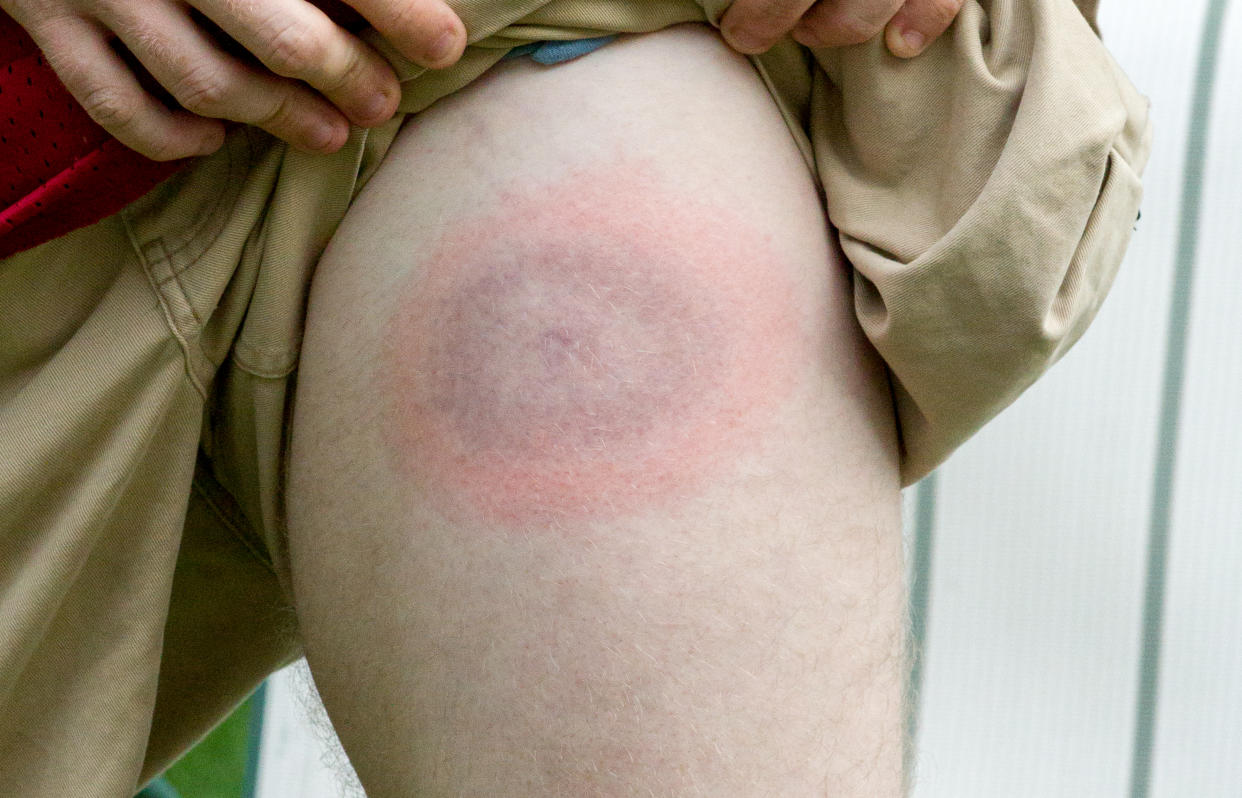Lyme disease cases 'threefold higher than previously estimated'

Lyme disease is on the rise, with a new study finding incidence rate could be three times what was previously thought.
The latest research, published in the BMJ Open, also has found there has been a significant increase in Lyme disease cases in the UK.
Researchers based in the UK and Germany looked at records of 8.4 million people registered with GP practices between 2001 and 2012 – a section of 8% of the general population.
The annual number of reported cases increased almost ten-fold in the same time, rising from 60 cases a year in 2001 to 595 a year in 2012.
The Lyme disease incidence rate was previously estimated to be 2,000 to 3,000 cases a year.
READ MORE: Can Lyme disease really cause you to lose your voice?
However, according to the new estimate, there were 7,738 cases in 2012 – and this figure could increase to more than 8,000 in 2019, if rates increase at the same rate they have since 2012.
“The incidence of LD is about threefold higher than previously estimated, and people are at risk throughout the UK,” said the study’s conclusion.
“These results should lead to increased awareness of the need for preventive measures.”
What is Lyme disease and how do you catch it?
To catch Lyme disease, you first have to get bitten by a tick, before a circular red rash develops around the bite.
For some people, that’s the end of it. But some who are diagnosed develop other, long-term symptoms, including aches and tiredness that can last for years.
Bella Hadid and her mother, Yolanda, have both been open about their struggles with the disease which has left the former bed ridden and hospitalised in the past.
Known as post-infectious Lyme disease, according to the NHS, its symptoms are often compared to chronic fatigue syndrome and fibromyalgia.
And it isn’t clear why it happens to some people who have been bitten and not others.
And apparently, the number of ticks potentially carrying the disease has been increasing.
READ MORE: Could ear 'tickle' therapy help slow the ageing process?
According to a study from Public Health England (PHE), numbers of the castor bean tick Ixodes ricinus – which tend to carry the disease – more than tripled between 2006 and 2016 thanks to warmer weather.
In 2006, around 200 ticks were counted, a number which had risen to more than 700 in 2016.
![Ticks thrive in the warmer weather/ [Photo: Pexels]](https://s.yimg.com/ny/api/res/1.2/Fmlspypy01oSNvPXGR9CKw--/YXBwaWQ9aGlnaGxhbmRlcjt3PTk2MA--/https://media.zenfs.com/en/homerun/feed_manager_auto_publish_494/ab3b872a2b95b4488418839a839465a0)
Ticks are thriving in the warmer weather [Photo: Pexels]
According to The Sun, PHE’s reporting system breaks the country into 2,864 grid squares comprising 6.2 miles each.
Apparently, the Ixodes ricinus tick was seen in 780 squares, including 548 where it hadn’t been spotted pre-2010.
While there were small clusters in north west Wales, Scotland and north east England, most of the new sightings were in southern England.
See a doctor if you feel unwell after a tick bite [Photo: Pexels]

See a doctor if you feel unwell after a tick bite [Photo: Pexels]
Though apparently, as with most studies like this, it could signify an increased awareness of ticks as much as an increase in tick numbers.
Even if it does imply the latter that doesn’t mean we’ll definitely get Lyme disease from them either.
Katherine Russell, a PHE expert on animal-borne infections, told the paper: “Just because this study has reported increased numbers of I ricinus ticks, this does not mean that all of these ticks will carry B burgdorferi, which causes Lyme disease.
READ MORE: This woman suffered a ‘life-threatening’ infection after getting her eyebrows tattooed
“Additionally, not all tick bites will result in an infection with Lyme disease.
“There are many simple ways in which people can protect themselves, for example by walking on clearly defined paths, using insect repellent and performing regular tick checks.
“Ticks can safely be removed with tweezers or a tick removal tool.”
Either way, if you’ve been bitten by a tick and are feeling pretty rough, book a GP appointment.

